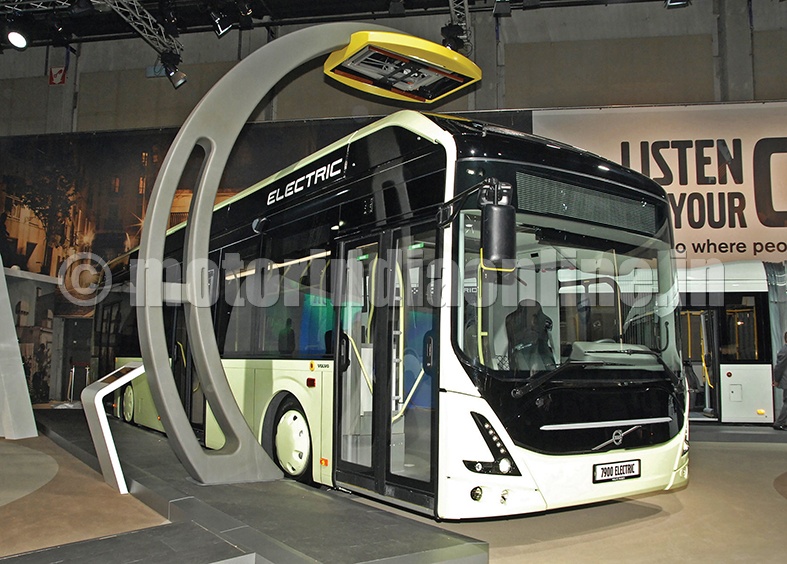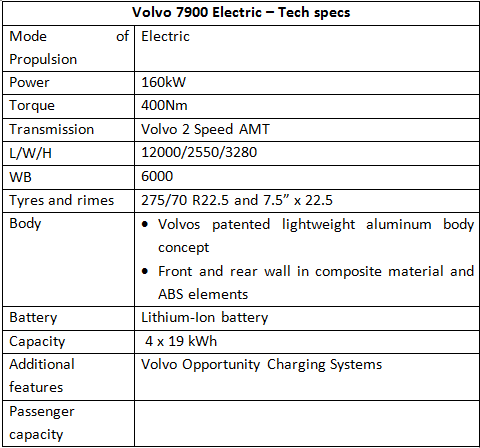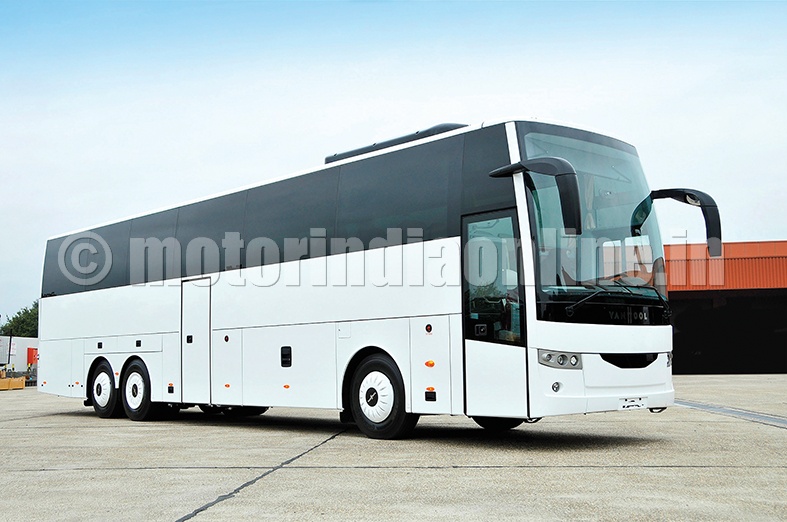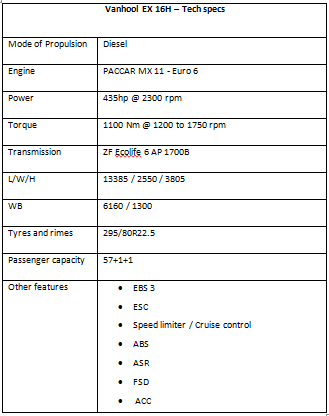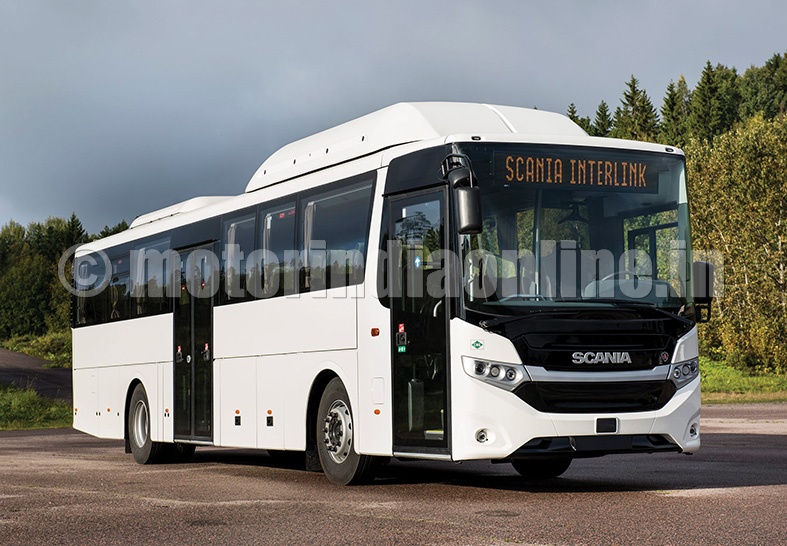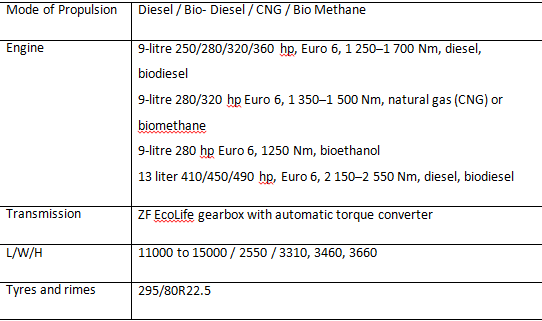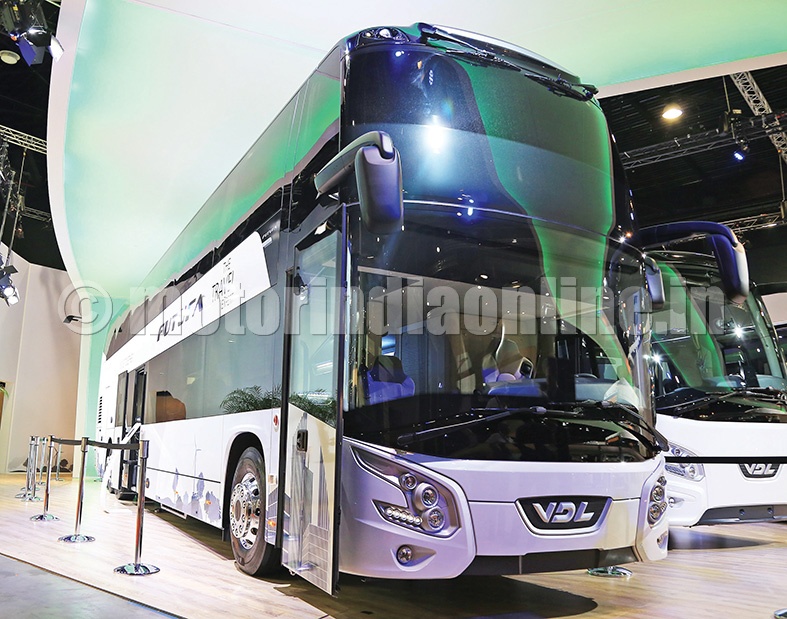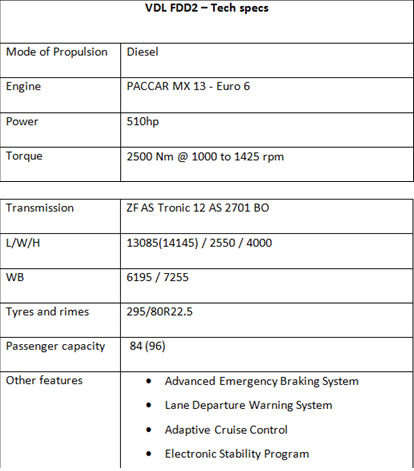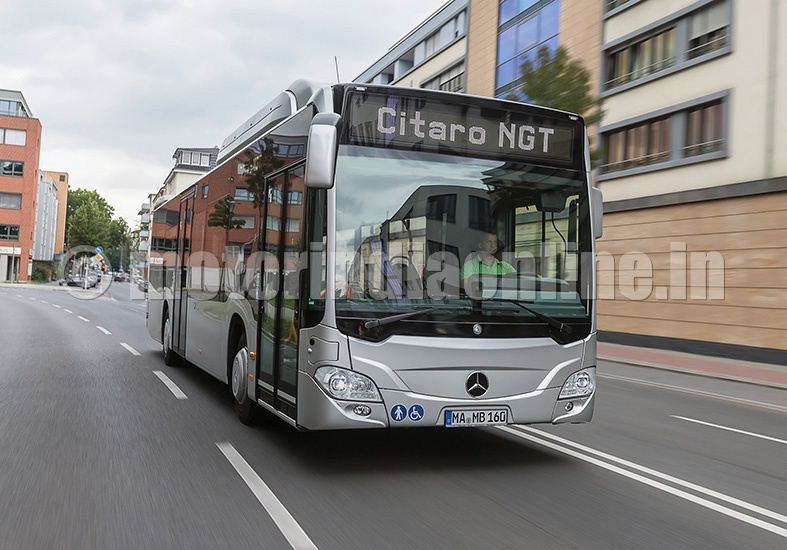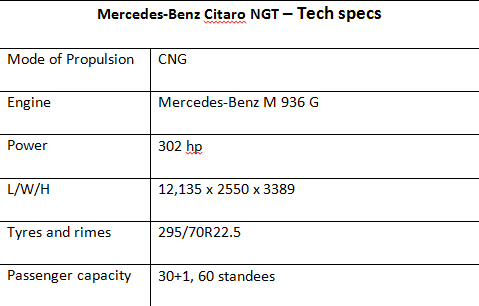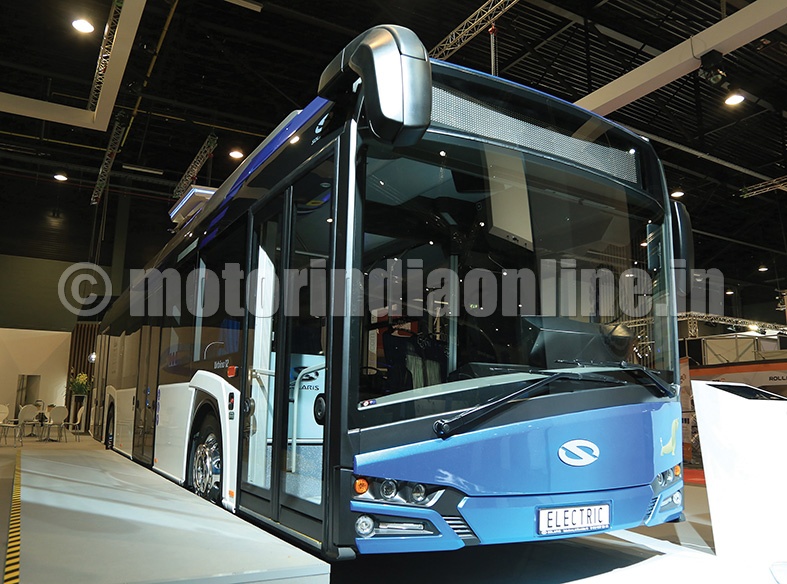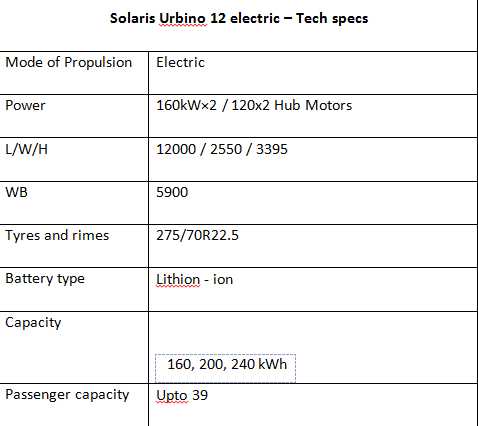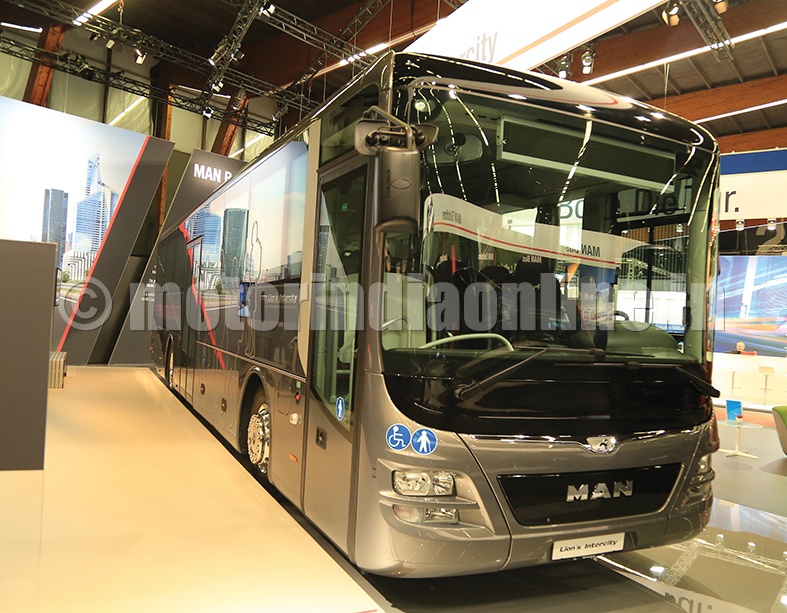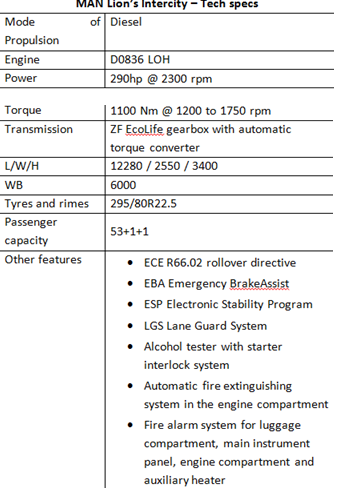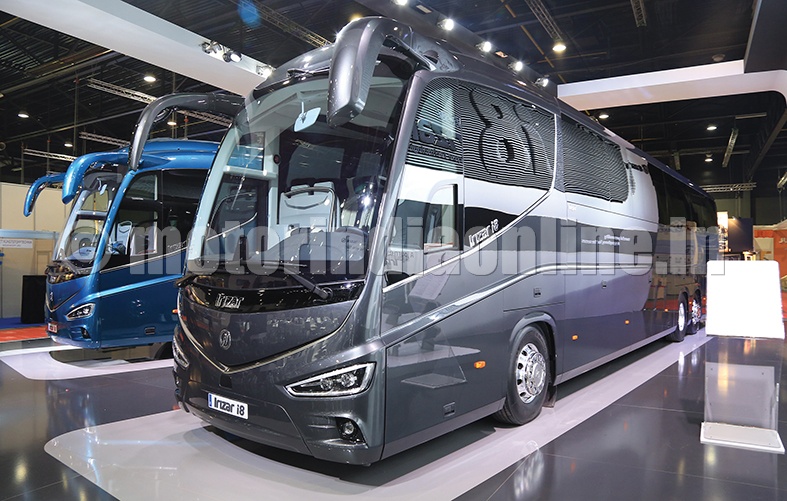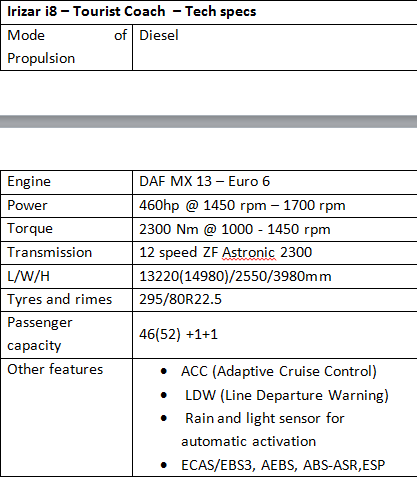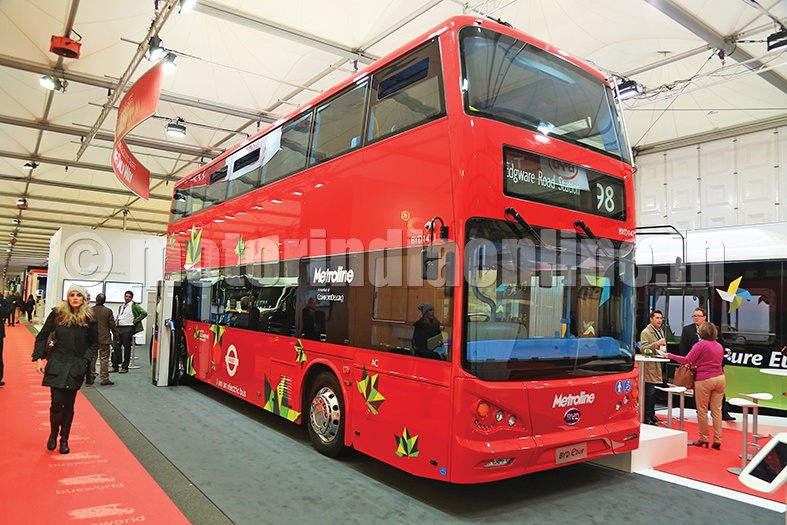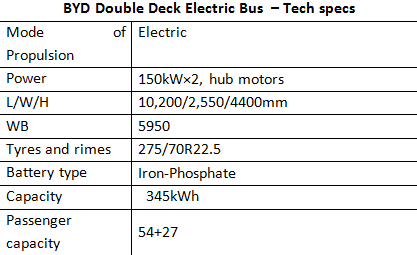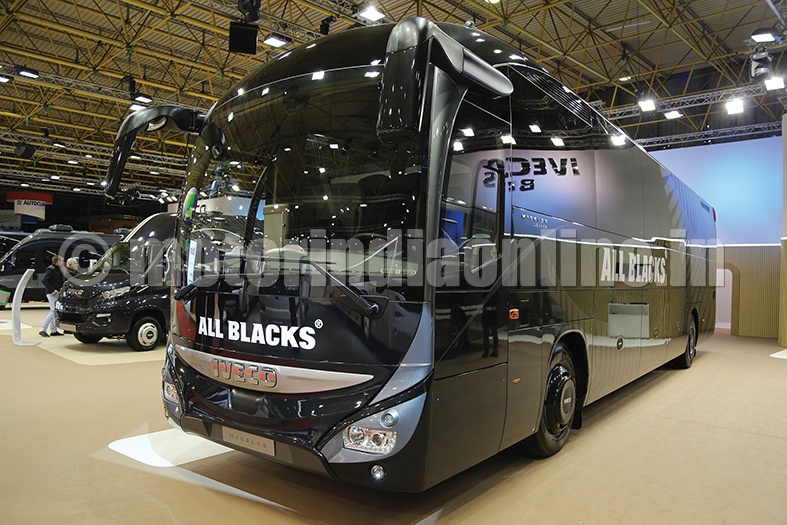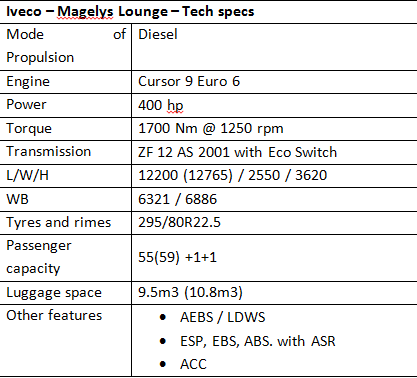Busworld Kortrijk has been the world’s biggest and most anticipated stage for world premieres and new launches for the bus and coach industry. This year’s show saw close to a dozen premieres and launches with electric buses being the main attraction. We bring you an exclusive snapshot on 10 of the most exciting new products launched at Busworld.
Volvo Buses
Further to the 7900 Hybrid electric buses, Volvo launched the all-electric 7900 here in Bus world. The all electric 7900 concept was premiered by Volvo in UITP – International Association of Public Transport, Public Transport Fare, Milan, in May last. Post the concept launch which is running in route 55 Gothenburg, Sweden, the production variant was launched by Volvo. This one more closer to road with proper LH drive unlike the centre position in concept, bus is now full 12m with regular FOH rather than shortened FOH in concept. With this, the all-new 7900 has the complete range of all electric and hybrid electric buses.
Volvo claims 7900 electric is about 80 per cent more energy-efficient than a conventional diesel bus. Its lithium-ion batteries are charged both by the energy generated whenever the vehicle brakes, and also via the main electricity network at the routes end stops. Each charge via the mains takes three to six minutes depending on the load, climatic conditions and topography. Each minute of charging allows for 5-10 minutes of driving. The bus is designed for bus routes of 10-20 km. Opportunity charging at end stops creates an electric bus infrastructure whose route length is unaffected by battery size.
Van Hool
Van Hool premiered its EX 16H a multi axle coach at Busworld. This was initially showcased at IAA in 2014. It is a brand-new line of touring coaches for the European market. The EX line will initially be marketed in 2 heights and 3 lengths. The model palette is composed of more standardised 2- or 3-axle vehicles which, depending on the configuration, can be used for the transport of tourists, scheduled services or intercity services.
The EX was wholly designed and developed in Van Hool´s parent company established in Koningshooikt, Belgium. The entirely new, modern and streamlined interior and exterior design of the EX reflects the characteristics of the vehicle: functional and efficient. All EX models are equipped with engines from the PACCAR MX11 – Euro 6 offer and get a GO manual-shift gearbox standard. ZF AsTronic and ZF Ecolife automatic gearboxes are possible as options.
Scania
The brand new Scania Interlink Low Decker was launched at Busworld. It is a gas-fuelled bus for suburban operations, which is equally attractive for shorter intercity travel. In short, it’s a bus for suburban operations, airport shuttle transfers, intercity journeys and school bus assignments.
The new bus joins the new Scania Interlink family along with the Medium Decker and High Decker. All feature the unmistakably attractive Scania front and rear styling. The unique angled front with its lower weight and greater turning radius can lower fuel consumption and the noise level.
Scania Interlink Low Decker is offered for the full range of engine options, including bioethanol, diesel and biodiesel. The exhibited Interlink Low Decker features Scania’s widely acclaimed 320 hp Euro 6 gas engine. This engine has been globally recognised for its excellent performance with the same drivability and torque as diesel, resulting in hundreds of deliveries not only in Europe but also in Asia and Latin America.
Scania Interlink – Tech specs
VDL
The VDL Futura family is now complete with the launch of Double Decker VDL Futura FDD2. As the successor to the successful VDL Synergy, the VDL Futura FDD2 is the next step. In 2010, VDL Bus & Coach launched the luxurious New Futura FHD2, which in 2012 was crowned with the prestigious title ‘Coach of the Year’. It formed the basis for an entirely new line of coaches, with the FDD2 as the current – and with a height of four metres, literal – high point.
Following in the tracks of the FHD2 and FMD2, the new FDD2 is the third branch in the Futura family. The Futura design language is clearly recognizable in the FDD2. Yet this double-decker also has its own distinctive design features. The height of four metres gave the designers the opportunity to create a bold and beautiful double decker.
The design is accentuated by the daytime running lights in the dynamically designed, arrow-shaped headlight units and the contour lights above the windscreen. The interior is characterized by round corners, good workmanship, modern, light colours and lightweight materials. It radiates unity and harmony, making the traveller feel at ease during the longer commutes for which double-deckers are mainly deployed. The Futura FDD2 is available in two lengths: 13,085 mm (FDD2-130 for up to 84 passengers) and 14,145 mm (FDD2-141 for up to 96 passengers), both three-axle coaches. The integral construction is similar to that of the FHD2, naturally with the necessary modifications for strength and stiffness that are required for a double-decker. The family is modular making it easy for manufacturing with more common parts. For example, the basic front and rear axle modules for the FDD2 are identical to those of the FHD2.
Evobus
When every other manufacturer was showcasing electric options in their stands, Evobus premiered the natural gas-powered Mercedes Citaro. The Citaro NGT (Natural Gas Technology) impresses with its quiet running and reduced CO2 emissions – both are crucial advantages in heavy city traffic. Practical-minded people will be convinced furthermore by the Citaro NGT’s low weight and a correspondingly large number of passenger seats, the engine’s strong performance, low fuel consumption and extended maintenance intervals. Mercedes-Benz offers the new powertrain variant as a Citaro NGT solo bus and as a Citaro G NGT articulated bus. The Citaro NGT can be operated on natural gas or on renewable natural gas – in the latter case, the Citaro NGT is actually virtually CO2 neutral.
The segment of urban buses in Western Europe amounts to about 10,500 new registrations a year on an average and remains on a steady level. The highly specialised European market for urban buses with a natural gas powertrain presently comprises just under 1,000 units a year. The gas tanks are now composite material with a plastic core, a casing made of carbon fibres and, a new feature, additional glass fibres. This combination of materials is very lightweight on the one hand and highly robust on the other.
This bus is powered by the new Mercedes-Benz M 936 G natural gas engine with a displacement of 7.7 l. “Small being the big” logic is weighing just 747 kg, including the primary catalytic converter. It is about 230 kg or almost 25 per cent lighter than the predecessor engine with a displacement of 12.0 l, making this engine a textbook example of successful downsizing. This engine is available in two power outputs, 476hp @ 1600rpm and 510hp @ 1600 rpm. Optional LED main headlamps are a new feature. The light cone of LED headlamps can be defined with special precision. Their colour temperature approximates that of daylight and thereby reduces the eye strain for the driver.
Solaris
Solaris presented the zero-emission new Urbino 12 electric as well as the new Urbino 12 LE designed mainly for suburban routes. Having had its world premiere at IAA Commercial Vehicles exhibition in Hanover in 2014, Solaris’s new generation city buses in 12-metre as well as 18-metre versions have already found buyers in European countries.
The new Urbino 12 electric bodyframe is made from corrosive highly resistant materials. The significantly low weight and the robustness the bus provides are the perfect foundation for a high-quality, reliable and most of all low energy consuming electric bus. Its to be noted that Urbino now has the complete range from 8m to 18m all electric.
The vehicle presented at the exhibition is equipped with Solaris high energy batteries that deliver 240 kWh and comply with the most rigorous safety standards. The set has been divided into six separate packs of 40 kWh each – 160 kWh are located at the rear of the vehicle, while the rest is mounted on the roof, over the first axle. This solution ensures proper load distribution on axles and furthermore provides additional room in the passenger compartment. The new 12-metre Urbino electric is fitted with the electric drive axle with axle-mounted motors, 125 kW maximum power each. This concept frees up space for passengers and significantly reduces the weight of the vehicle.
The new Urbino 12 electric has been fitted with an innovative pantograph charging system. The 450 kW power allows for a quick recharge of the batteries on route. A traditional plug-in connection has also been provided and can be used for overnight charging at the depot. Solaris offers many more configurations in that regard.
MAN
Following its premier at MAN BusDays 2015 in Ankara, the MAN Lion’s Intercity was showcased for the first time at Busworld. The Intercity has been adapted for use in long-distance transport and shuttle services and as a robust school bus, combining first class comfort with both a high level of functionality and outstanding safety in the very best MAN quality.
The vehicle sets standards not just with its striking, aerodynamically-optimised design and its excellent driving characteristics, but above all with its efficient fuel consumption and low life-cycle costs. The concept behind the low total cost of ownership is the consistent use of light weight components. At the Busworld trade fair, MAN showcased the bus in the 12-metre and 13-metre long versions.
The latest generation of safety systems like ACC, the advanced emergency braking system (EBA) and the lane guard system (LGS) are available for all coaches and intercity buses. Rain and light sensors will be offered as an option from the start of 2016 long before these become a legal requirement.
Irizar
We all know that Irizar, the Spanish bus and coach manufacturer, is a leader in bus and coach bodies. It has completely matured into a full-fledged bus and coach manufacturer. This year it challenged even the regular bus and coach manufacturer with all Integral coaches on display and trial. It is learnt that Irizar has manufactured close to 250 integral coaches this year, up from 120 in 2014.
Irizar stole the show when it launched the top-of-the-line integral coach – i8. The Irizar i8 is a luxury tourist vehicle for long journeys, regular lines and other special services, equipped with the most advanced technology, it is the new flagship of the brand and the model that replaces the Irizar Pb, with strong improvements made and the incorporation of cutting-edge technology.
Special attention has been paid to the design in order to ensure that the identity and character of the Irizar brand stand out in the Irizar i8. It is worth noting the pronounced line that flows along the entire side of the coach, which has more in common with the design of modern cars than conventional coaches. The attractive V-shaped stainless steel trim stands out at the front, framed by new stylish, full-LED headlights. The rear is equally evocative. The aggressive lines are maintained, accentuated by a V-shaped emblem as a new element. Nothing more to mention, it’s truly elegant from any view.
BYD
When most other bus manufacturers were counting the sale of full electric buses in tens and hundreds, it was BYD, the largest electric bus maker in the world with over thousand units running on roads, that seemed to have the last laugh. BYD buses are tested or given for trail run in more than 160 global cities including, Salzburg, Warsaw, Brussels, Tel Aviv, New York, San Francisco, Bogota, and of course Bengaluru. Each city received BYD electric buses with their own programme, and that means huge database for fine-tuning the operation system and hardware.
In July last, BYD and Alexander Dennis Ltd. (ADL) formed a new alliance that will see the introduction of London’s first large-scale, zero-emission, single deck bus fleet – 51 units of 12m single deck e-buses. This will also be the single largest fleet of full size electric buses in Europe.
At Busworld, BYD launched high capacity e-buses – a 10.8m double decker, 18m vestibule bus and a 8m midi bus. The double decker is made for London transport, which has the world’s largest fleet of double deckers of more than 2,000.
Iveco
Iveco had the star attraction of the show, as the Magelys was crowned as the “International Coach of the Year 2016”. The top of the line “Lounge” version was displayed bearing the colours of the prestigious rugby team, the New Zealand All Blacks. The coach was stunning with all black and nevertheless being crowned as the Coach of the Year. Magelys is available in two lengths – 12.20m and 12.8m – and three versions – Line, Pro and Lounge.
The Magelys Lounge, a “full options” version unveiled at Busworld, is based on the standard of the Pro version. It benefits from the range of equipment: AS-Tronic gearbox, lateral sun blind, driver’s seat armrest, electric defrosting of the driver’s window, GPS, reversing camera, camera for the centre door, hostess seat, hostess cupboard, hostess microphone, hostess camera, coffee machine, camera filming the road for the passengers, and glazed central roof section. The other options include seats with adjustable headrest, USB sockets, touch screen radio display and two games tables at the rear allowing eight passengers to sit opposite one another for a more relaxed experience.
The Magelys is equipped as standard with ABS brakes, ASR to optimise traction control and grip during start up, ESP to correct the vehicle’s trajectory when cornering and prevent the vehicle from swerving off the road, AEBS emergency brakes and a lane departure warning system (LDWS), a useful aid that warns the driver of any loss of concentration or sleepiness. As an option, the Magelys can be fitted with the Adaptive Cruise Control (ACC) which uses radar to ensure a safe distance is kept from the vehicle in front and automatically triggers the engine brake and retarder if this distance suddenly decreases.
